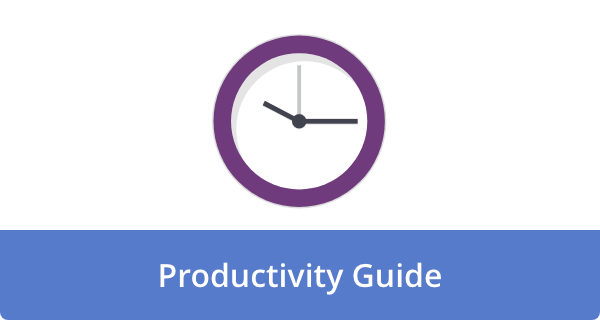
Waking up early doesn’t make you productive — but what you do in those first minutes might. After watching Thomas Frank’s recent video about morning routines, I found practical approaches to starting the day right.
First, let’s clear something up: you don’t need to wake up at 4 AM to be successful. Frank points this out brilliantly, citing how authors like C.S. Lewis and Ray Bradbury would often wake up around 9 AM and still create masterpieces. This runs counter to the “hustle culture” narrative that dominates productivity content.
The Magic Morning Trio: Movement, Water, Sunlight
What struck me most was Frank’s simple but effective three-step morning formula. No complicated routines or expensive gadgets – just three natural elements that work with your body’s biology:
- Movement – Even minimal activity signals your body to wake up
- Sunlight – Triggers your circadian rhythm and improves sleep quality
- Water – Helps overcome morning grogginess quickly
I’ve tested this approach myself for the past week, and the difference is remarkable. That foggy, truck-hit-me feeling dissipates much faster when I follow these steps rather than lying in bed scrolling through my phone.
The science behind the sunlight component is particularly compelling. When sunlight hits the photoreceptors in your eyes, it sends signals to your brain that it’s time to wake up. A 2017 study even found that morning exposure to “circadian-effective light” improves sleep quality and helps you fall asleep faster at night.
Beating the Snooze Button Battle
The hardest part of any morning routine isn’t designing it — it’s getting out of bed to do it. Frank’s insight here is gold: you can’t compete with someone who’s having fun.
This simple truth explains why willpower alone fails most morning routines. When your only reason to get up is discipline, you’re fighting an uphill battle against your warm, comfortable bed. But when you have something enjoyable waiting for you, everything changes.
You can’t compete with somebody who’s having fun.
For Frank, it’s riding his e-bike to work while listening to audiobooks. For me, it’s enjoying a cup of coffee on my porch while reading for 20 minutes. The specific activity doesn’t matter – what matters is having something to look forward to that outweighs the comfort of staying in bed.
The Power of “Useful Movement”
One concept Frank mentioned that resonated with me was “useful movement” – physical activity that serves a purpose beyond just exercise. His 18-mile e-bike commute gives him exercise, learning time (via audiobooks), and transportation all at once.
This approach solves the motivation problem many of us face with exercise. When movement has a clear purpose, you don’t need to rely solely on willpower or guilt to make it happen. I’ve started walking to the local coffee shop instead of driving, and it’s become a highlight of my morning rather than a chore.
Making Mornings Matter
The most valuable insight from Frank’s video was his suggestion to use morning time for activities that move you forward. Most of us spend our days reacting to obligations and other people’s priorities. Morning routines create space for your priorities.
Whether it’s learning something new, working on a side project, or simply planning your day intentionally, mornings can become your secret weapon for progress when the rest of your schedule feels overwhelming.
I’ve started using my mornings to work on writing projects before my brain gets cluttered with emails and meetings. The difference in my focus and output is night and day compared to trying to squeeze creative work into the cracks of a busy afternoon.
Frank’s approach works because it’s simple, science-backed, and sustainable. No gimmicks or extreme measures – just practical steps anyone can implement. If you’ve struggled with morning routines in the past, his three-step formula might be worth trying.
Frequently Asked Questions
Q: Do I really need to get sunlight first thing in the morning?
While natural sunlight is ideal, any bright light is better than staying in a dark room. If you wake up before sunrise or live in an area with limited morning sunlight, consider a light therapy lamp that mimics natural daylight. The key is exposing your eyes to bright light to signal your brain that it’s time to be awake.
Q: How much water should I drink in the morning?
A standard glass (8-12 ounces) is sufficient to help combat morning dehydration. The exact amount isn’t as important as making it a consistent habit. Some people prefer room temperature water, as cold water can be jarring to your system first thing in the morning.
Q: What if I don’t have time for a morning routine?
Even a 5-minute routine can make a difference. The three elements Thomas Frank suggests (movement, water, sunlight) can be accomplished very quickly. Standing by a window while drinking water and doing a few stretches takes almost no time but can significantly impact how you feel throughout the day.
Q: Is it better to exercise in the morning or evening?
Research shows both have benefits. Morning exercise may help with consistency and can boost your metabolism throughout the day. Evening workouts might allow for better performance since your body temperature is higher. The best time is whenever you’ll actually do it consistently. Even light movement in the morning can help you wake up, regardless of when your main workout happens.
Q: How can I find something enjoyable to add to my morning routine?
Start by thinking about activities you already enjoy but rarely make time for. Reading, journaling, listening to podcasts, or enjoying a special breakfast are standard options. Experiment with different activities for a few days each to see which gives you that anticipation feeling. The key is finding something that feels like a treat rather than another obligation.











Howie Jones
My name is Howie and I'm a Customer Success Manager at Calendar. I like to ensure our customers get the best experience using our product. If you have questions email me howie at calendar.com